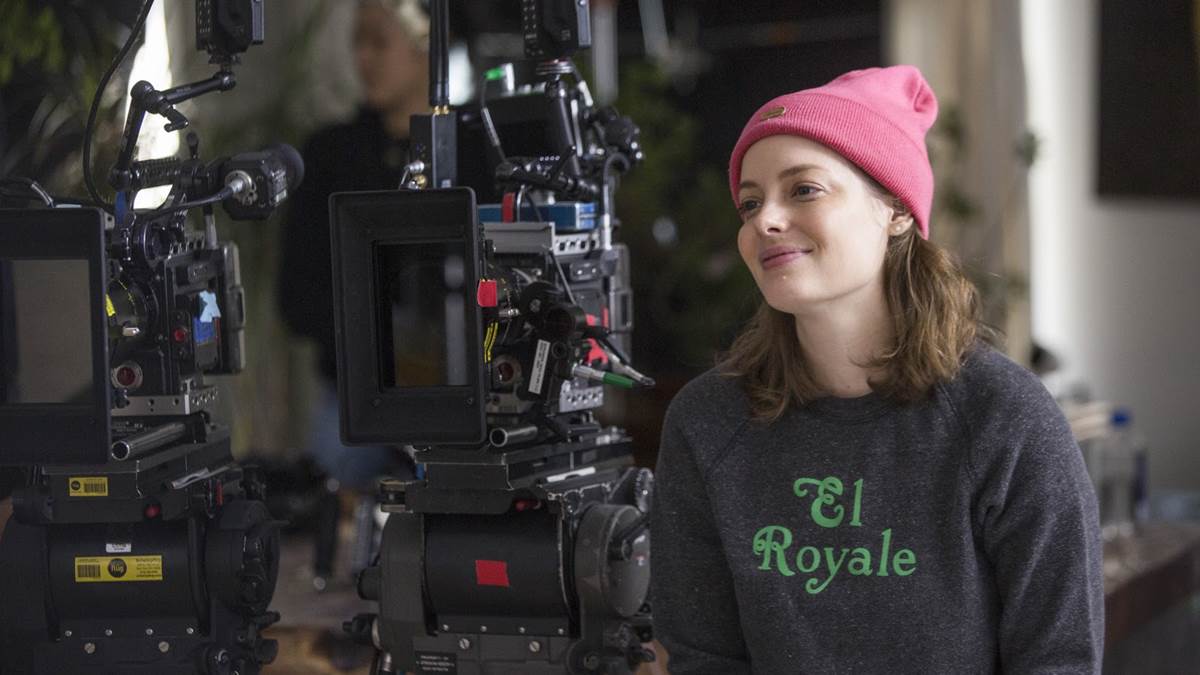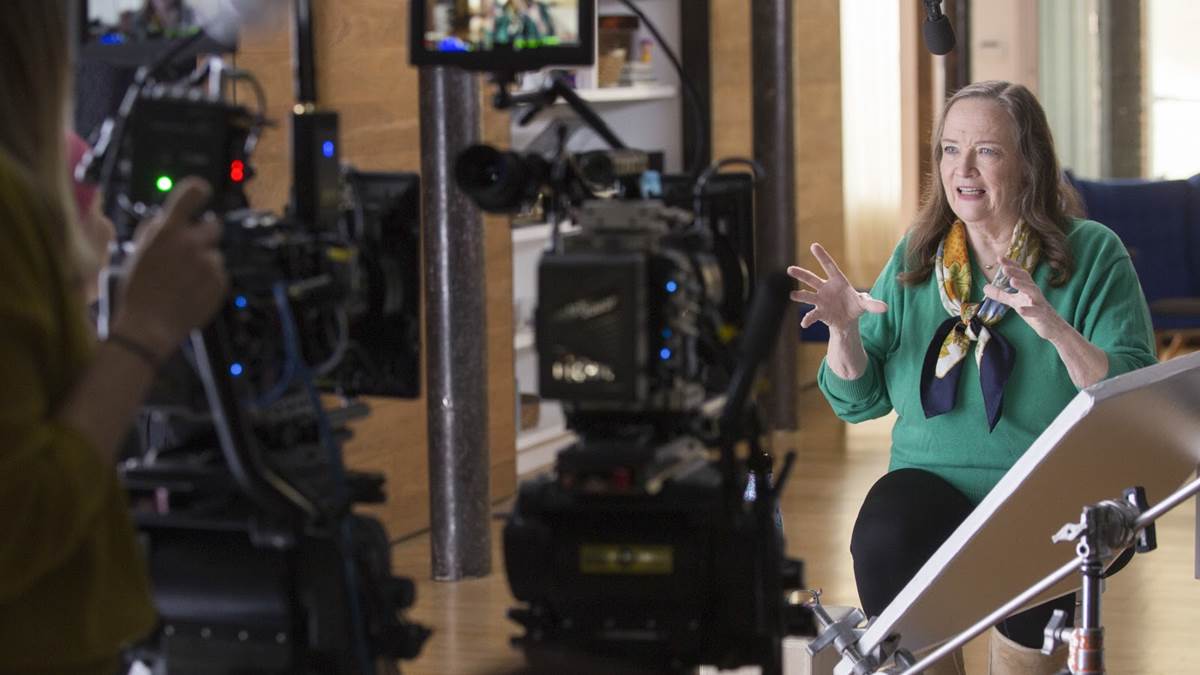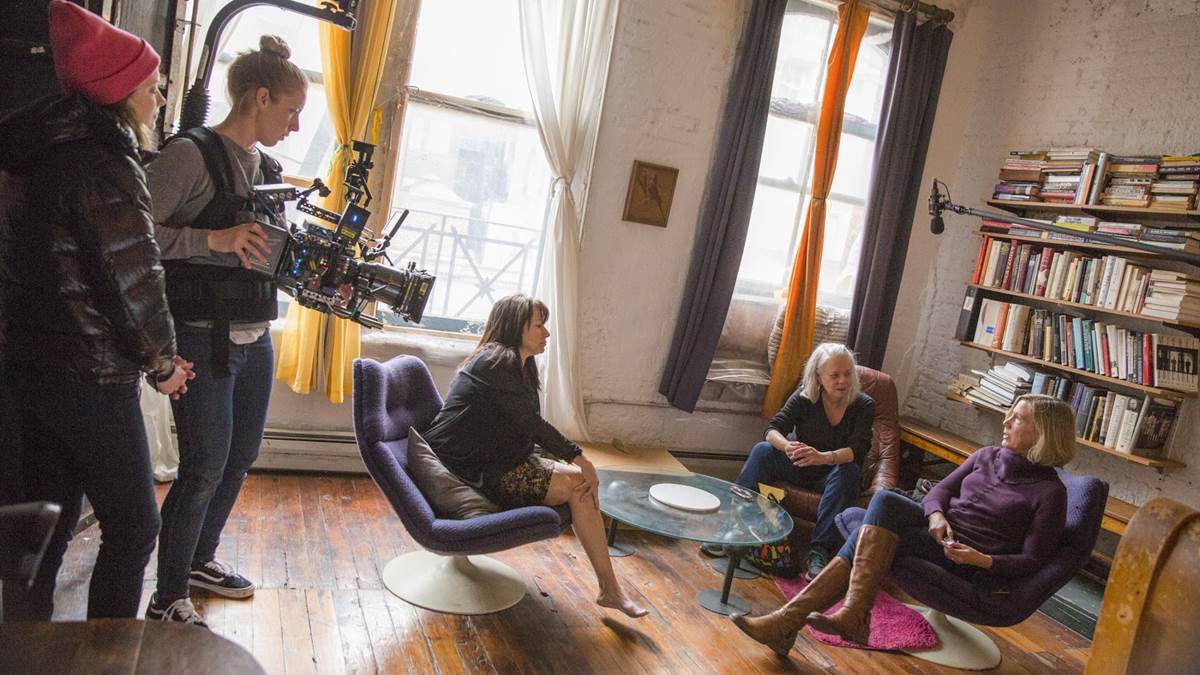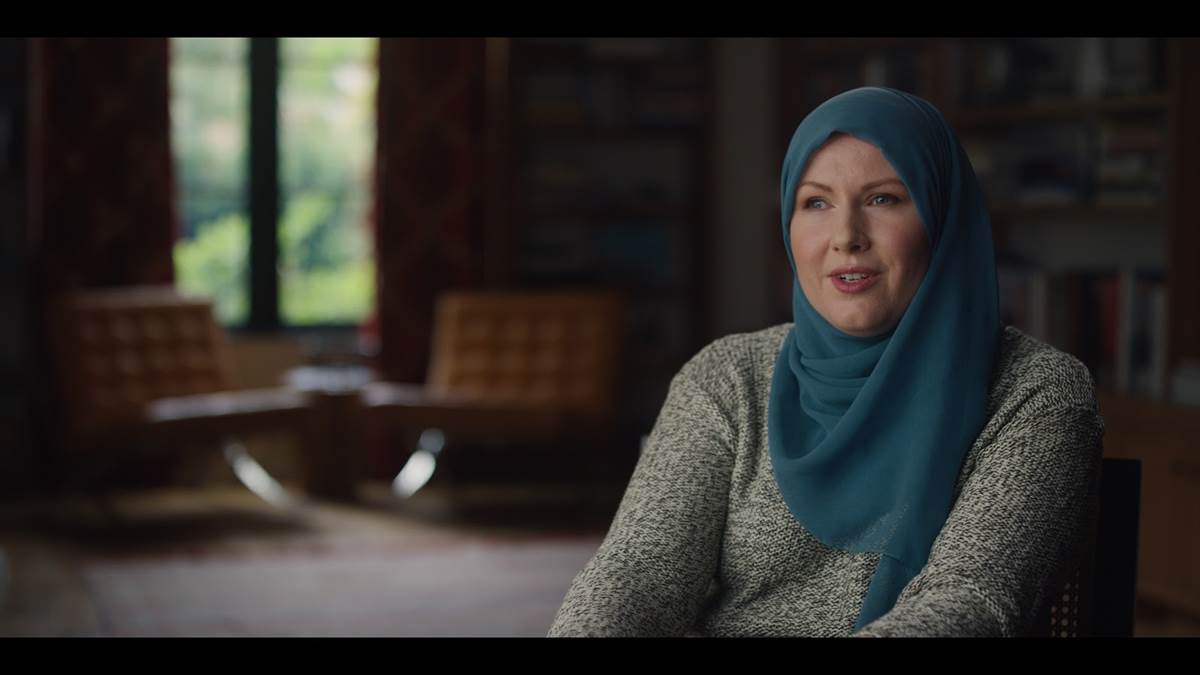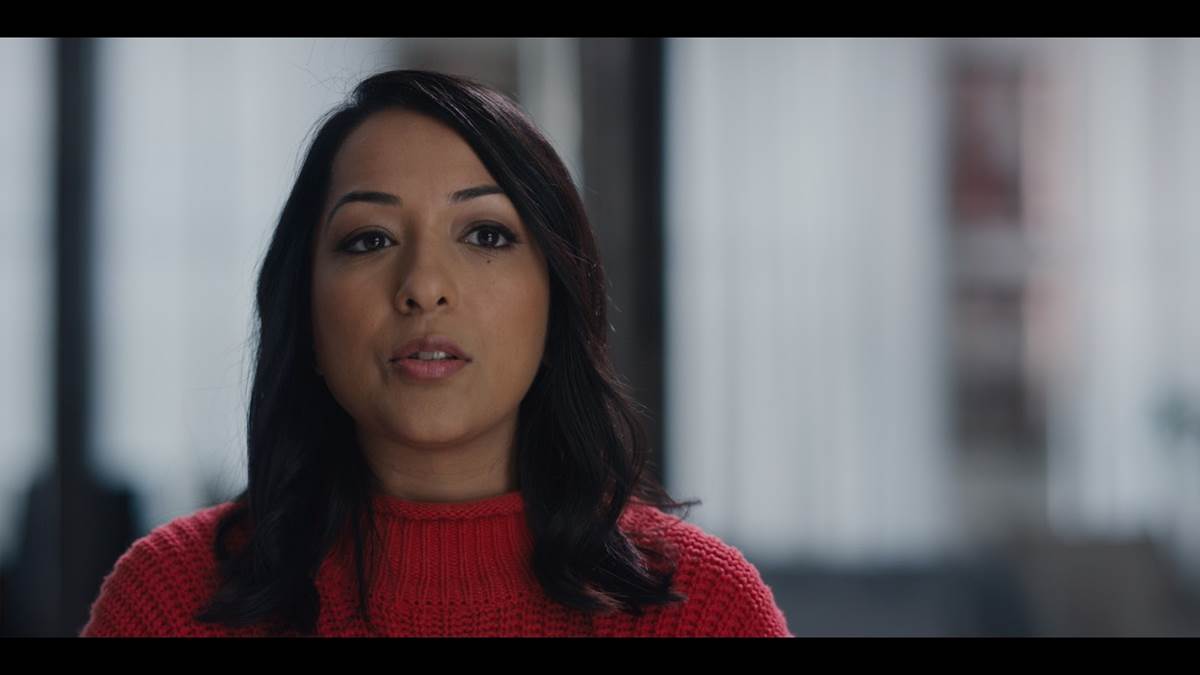Marvel’s 616, a brand new series on Disney+, explores Marvel’s rich history by going way beyond the stories and character everyone already knows and loves. Eight different filmmakers take a deep dive into completely unique Marvel stories that interest them.
The second episode, directed by Gillian Jacobs, recognizes some of the trailblazing women that helped create and expand the Marvel Universe. The episode spans generations and looks at some of the greatest storytellers Marvel’s House of Ideas has to offer.
The episode opens, quickly jumping from one female creator to the next as they explain what drive them to write comics featuring female characters.
After the show’s introduction, we meet Sana Amanat, VP at Marvel Entertainment. She talks about growing up as a Muslim in New Jersey and not really fitting in with the other kids her age. She grew up with two older brothers who got her into comics and eventually credits X-Men: The Animated Series for getting her into superheroes as well.
Next, we meet Trina Robbins, a comic writer, who explains that back in the 40s “all kids read comics.” Louise Simonson, another comic writer, echoed that sentiment by talking about some of the comic she would read as a child. She specifically mentioned how she would read “Superman” comics but would get irritated with Lois Lane because she was always worrying about proving Clark Kent was Superman rather than doing her job as a reporter.
Author Shawna Kidman, who pops up throughout the episode to help tell the story of the history of comics, explains that there were 70 million comic book readers in the late 1940s. She goes a little deeper by explaining that the audience was an even split of male and female readers, due in large part to the wide range of genres comics would cover.
Robbins introduces us to the first costumed superheroine – Miss Fury. The episode is loaded with all kinds of great shots of comics old and new. We get to see a lot of Miss Fury here.
Kidman returns to explain that the industry crashed in 1954-55 when comics were brought in front of congress for hearing that resulted in a code designed to restrict comics. As a result readership was cut in half in roughly a single year. Marvel was able to stay in business because it had its own distribution company. In order to succeed after this crash, Marvel decided to focus on a demographic they could count on – young and teenaged boys.
Next, we meet Nilah Magruder, an artist and writer. She explains how she got into animation school, despite her mother wanting her to pursue other careers, but didn’t start reading comics until Manga started coming over. She didn’t like the lack of depth in female characters in comics so she decided she wanted to create a story about a girl because then the girl couldn’t lose.
Moving on with the history of comics, we get to the early 60s which sees the “Marvel renaissance” and the introduction of the Fantastic Four. This resulted in a big change in the way superheroes were created and written. Writer Jo Duffy talks a bit about how much she related to the Human Torch.
Duffy explains that, when she was growing up, she had no idea comics were supposed to be for boys and it was a shock to her when she learned this as a teenager. She goes on to explain that she was also unaware of the lack of women working in comics, even when she got into the business.
The episode pays tribute to some of the very early women in comics, including corresponding secretary Flo Steinberg and artist Marie Severin. In the case of the latter, Robbins tells the story of how Severin did illustrations for Esquire because all of Marvel’s male artists were too busy and that eventually led to her getting to draw for Marvel.
Jumping ahead to the 70s, Kidman explains that publishers were trying to rebuild their audiences by branching out into different genres. Stan Lee tried to bring back superheroines, which led to the creation of some very forgettable characters but also the introduction of Carol Danvers, AKA Ms. Marvel. We then meet writer Kelly Sue DeConnick, who explains the character’s history.
Next, Duffy talks about getting her job at Marvel Comics, returning artwork to the artists. Eventually, she became an assistant editor and, after being passed up multiple times, she finally got the opportunity to write “Power Man and Iron Fist,” taking the series away from legendary writer Chris Claremont. After a successful run, Marvel eventually took that series away from Duffy and moved her to “Star Wars.”
Next, Amanat’s family visits and explains their history and coming over from India. Amanat tells her story of learning that she was different from those around her and that they didn’t like it. She decided she wanted to change that perception by being the one telling the stories and building the narrative. She was studying to be a lawyer before getting a job in comics. Eventually, she was offered a job at Marvel but doubted that she could do it because she didn’t know as much as the people who had been doing that job for years. Marvel told her they wanted her as an editor because she would give them a different voice.
We then rejoin Magruder as she talks about how she would always instinctively create white characters while writing her stories. At a certain point she decided to make a conscious effort to change that and drew a black main character for her online comic “MFK.” The comic eventually went on to win an award, jump starting her career as a writer.
Next, we meet Annia Nocenti, another writer. She catches up with Simonson, whom she refers to as her mentor, as they reminisce about their time at Marvel. Nocenti explains that Marvel was still male dominated in the 80s but was just starting to make a shift.
As the two writers talk about their time at Marvel, Simonson explains that she was succeeding and her comics were making money because she was writing “X-Men.” Nocenti, who was her assistant at the time, explains that no one else wanted to take “X-Men” because they all loved what they were working on, leaving Simonson to run the successful series.
Nocenti then explains that she finally got her first writing assignment. Unfortunately for her, it involved killing Spider-Woman. She admits that she didn’t realize at the time that killing a character was something no one wanted to do. Luckily, her career survived this story and she went on to write “Daredevil.” She explained that she loved choreographing fights and even took karate while she was writing “Daredevil.”
Nocenti and Simonson are then joined by artist June Brigman as the three discuss some of their time at Marvel. Simons admits that she avoided writing female characters because those comics never lasted and she didn’t want to be typecast as a woman who only wrote female characters. Nocenti explains that she would try to write like a man.
The episode then gets into “Power Pack,” a comic created by these three women. Brigman admits that, prior to “Power Pack,” she hadn’t worked on anything because she couldn’t draw superheroes. She could draw children though, and that made her the perfect artist for this new series.
The episode then moves on to the 90s, as the graphic novel begins to rise, creating space for comics in book stores. This shift made comics much more accessible, especially to women. This opened up the female market and furthered the shift in the world of comics.
We then rejoin Magruder again as she talks about getting an email from a Marvel editor about working on a Rocket Raccoon and Tippy Toe Squirrel comic. This made her one of the first black women to ever write for Marvel and eventually led to her getting to write Spider-Byte for Marvel’s Spider-Geddon comic event.
Next, DeConnick talks about starting to write Captain Marvel. Her series changed Carol Danvers as a character and was groundbreaking for the way that it created a strong female character without sexualizing her. She talks about a note she got to change one of her favorite lines from “every little girl” to “every little kid” to not alienate male readers. She admits that she flipped out and refused to change it. Marvel was ok with that, and the line made it to print as she wanted.
We then get back to Amanat as she talks a bit more about her experiences growing up and how they inspired her to create a new character named Kamala Khan, aka Ms. Marvel. We’re then introduced to G. Willow Wilson, a writer who Amanate approached to work on the character.
Wilson laughs as she explains that she though the call was a joke. She thought there was no way Marvel would have been ok with this project so she thought she was being pranked. She admits that, even after learning that it was real, she didn’t say yes right away because she was afraid of the pushback they would get from the public. Eventually though, she accepted.
Wilson and Amanat share some details on their experience creating the now-popular character, including giving her her own “with great power” moment, which we see in her first issue.
Amanat explains what it was like seeing the character rise in popularity so quickly. She tells a story about getting the opportunity to introduce President Barack Obama and we see a clip of him thanking her for her work in giving us this great character.
As the episode begins to come to a close, all of the women featured in the episode explain how they never would have believed that comics could have gotten to the state at which they are currently in, with incredibly talented women doing all kinds of great work. We then see a long list of fantastic female comic creators an their work.
The episode closes with a montage of these women talking about their work as we see clips of them at comic events with cosplayers dressed as some of the characters they created.
You can learn more about Marvel’s 616 and see recaps of each episode here. All eight episodes of Marvel’s 616 are streaming now on Disney+.

